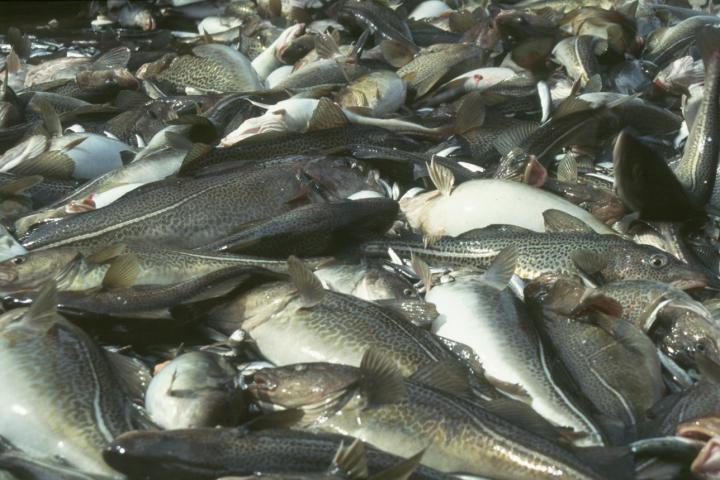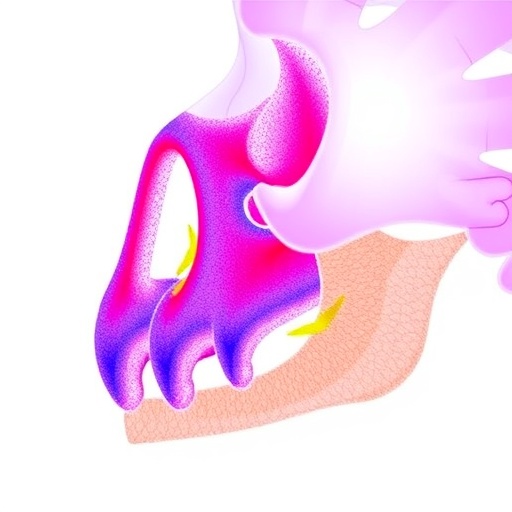Fish otoliths record information on fish metabolism; analyses of old and new otoliths can therefore provide new knowledge about how different species of fish adapt to new conditions, including climate change

Credit: Photo: Peter Grønkjær
For the first time ever, an international research team has shown that fish otoliths record information on fish metabolism. Analyses of old and new otoliths can therefore provide new knowledge about how different species of fish adapt to new conditions, including climate change.
Fish swim around with calcified structures in their inner ear. The so-called otoliths, or ear stones, help, among other things, the fish to tell the difference between up and down, determine the speed of swimming and much more.
It is carbon, in the form of CO2 and calcium from the blood, which makes up the otoliths. But carbon is found in several forms – or as multiple isotopes – such as the slightly heavy 13C and the slightly light 12C.
The research team led by researchers from Aarhus University, Denmark, has now shown that the composition of the two isotopes in a fish’s otoliths reveals whether the fish has had a high pulse rate or has completely relaxed. In the same way as a fitness tracker, they monitor and store information on the fish’s activity level.
Otoliths – a fish fitness tracker
The carbon in the calcium comes from two sources: uptake from the water in which the fish swims and the food that it consumes to satisfy its energy demand. The carbon from both sources diffuses into in the fish’s blood before some of it ends up as calcium in the otoliths.
By careful analysis of the calcium in the otoliths, researchers can determine the range of the carbon contribution coming from food and water, respectively. This is because the two sources have different ratios of the heavy and light carbon isotopes. Water typically has a so-called delta 13C value of 0 per mill, while the corresponding value for the food is about -20 per mill. So, if the delta 13C value of carbon in the otoliths is -5 per mill, it means that 25% of the carbon comes from the food.
The researchers have now coupled the variations in the carbon with the fish’s metabolism. When the fish’s metabolism increases, for example when it swims in warm water or is more active, it burns off more food and the proportion of carbon from the food in the otoliths increases.
A treasure trove of data
Otoliths are like a tree’s rings. Each new ring reflects how much the fish has grown, showing as for trees each year of a fish’s life. And the data remain stored in the otoliths, even after the fish is dead.
By analysing the 13C value in each growth ring, researchers are now able to tell how the metabolism of a fish has changed on a monthly basis during its life time. In fact, the researchers can analyse how, for example, seasonal variations in temperature, food and the fish’s behaviour have affected its metabolism.
“Our new discovery will be the key to a treasure trove of new information,” says associate professor Peter Grønkjær, Department of Bioscience, Aarhus University, who is the man behind the data to be made public today in the journal Communications Biology from Nature.
Earlier, researchers have had to rely on experiments in artificial set-ups in the laboratory and prepare theoretical models of fish metabolism, making simulation of natural conditions impossible.
“Now we can measure and understand how fish are affected and adapt to changes in the environment and the rate of the food intake needed to have enough energy for swimming, growing and reproducing. We are now able to develop much better models to illustrate what happens to the fish when the environment changes,” Peter Grønkjær explains.
Long time series
Since the 1890s researchers have collected otoliths from fish to date and measure annual growth rates.
The researchers who more than 100 years ago collected and stored otoliths in small brown paper bags in the archives of the research institutions could hardly have imagined that the same otoliths now provide new significant insight into the life of fish.
But it is not only these archives that contribute a wealth of knowledge about the life of fish. Very old otoliths may also be found in, for instance, kitchen middens. And even though these otoliths are several thousand years old, they contain a carbon signal that reveals the fish’s metabolism.
“Knowledge about the metabolism of fish under conditions that were very different from today’s can be used to predict the future. We will have much better knowledge of what will happen with the different fish stocks when the sea becomes warmer in the future,” says Peter Grønkjær.
His research group has already initiated the analysis of otoliths of Greenlandic cod, available in an unbroken series from 1926. Hopefully, the researchers will within a few years be able to provide yet another important piece in understanding the puzzle of the marine environment in the future.
###
Further information:
Associate professor Peter Grønkjær, Department of Bioscience, Aarhus University. Tel.: + 45 2338 2177; email: [email protected]
Dr Clive Trueman, Ocean and Earth Science, University of Southampton, Waterfront Campus, European Way, Southampton SO14 3ZH, UK. Tel.: +44 (023) 8059 6571: mail: [email protected]
Read the scientific article here:
https:/
DOI: 10.1038/s42003-018-0266-5
Media Contact
Peter Grønkjær
[email protected]
45-23-38-21-77
Related Journal Article
http://dx.




